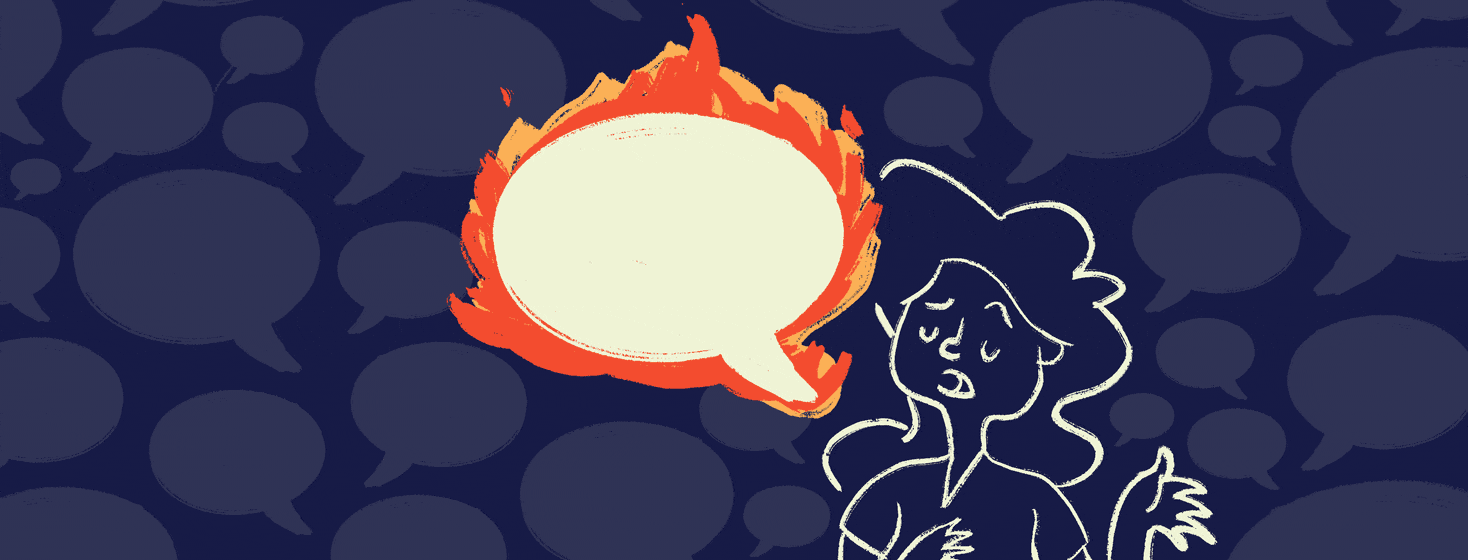4 Types of Lupus Flares
Do you tend to have the same kind of lupus flare repeatedly? Or does it throw you for a loop, and you never quite know what to expect?
I’ve found that I have 4 different kinds of lupus flare-ups. However, it doesn't feel like I’m in charge. Sometimes one type of flare will morph into another kind, and who knows when my lupus might decide to add a new variation to the mix. My lupus flares tend to rotate between painful, fatiguing, silent, and damaging flares. Each type can also differ in length from short-term to longer flare-ups.
My lupus flares tend to rotate between painful, fatiguing, silent, and damaging flares. Each type can also differ in length from short-term to longer flare-ups.
Lupus pain flare-up
For me, this is the worst and most common kind to go through. During painful flares, I have a ton of joint pain, mostly in my hands and knees. Less frequently, I experience burning rashes, pain with breathing (pleurisy), and tendonitis.
Lupus can send inflammation and pain practically anywhere, from my ankles to my shoulder joints. But most of my pain tends to be in my hands and wrists, so it’s hard to get things done. I might not be able to use my phone or hold a cup without aching and throbbing pain.
I prefer to treat my pain by soaking in a bath or lying on my heating pad because it’s comforting, but any inflammatory pain or swelling is typically better off being treated with ice. I’ll also take steroids and pain meds during a pain flare.
This is an excruciating and draining type of flare to go through. I’ve found that these flares most often follow physically or emotionally stressful events and hormone fluctuations (such as my menstrual cycle).
Fatigue flares
Raise your hand if lupus has ever made you so tired that you could compare it to blacking out. (My hand is shooting up unless I’m too tired.) This is fatigue that makes it too hard to walk, makes me forget things that happen before I fall asleep, and makes the next morning painful and groggy.
Fatigue flare-ups can be wildly inconvenient and exhausting, but I do prefer them to pain flare-ups. I would rather fall asleep on every piece of furniture I own than suffer through high levels of pain. When lupus makes my fatigue surge, almost any surface seems like a luxurious bed. It’s almost like my body is trying to hibernate.
I can mentally deal with fatigue better than pain. Although, sometimes I have to frantically call people to drive my kid(s) around because I don't feel safe driving with severe fatigue. And I also lose a lot of time to excessive sleep during fatigue flares.
These flares will appear at random, but they also show up more reliably after I’ve done something fairly strenuous or had too many busy days in a row. Of note, my overall fatigue is much better after learning I had sleep apnea and starting CPAP therapy.
Silent flares
These are disease flare-ups that happen at a level lower than the background noise of my life. For example, everything feels fine physically but my labs show protein in my urine. Or, I have developed an alarmingly high pulse rate but I couldn’t feel it, so I didn’t know I needed to go to cardiology until it was discovered at an otherwise routine appointment.
Lupus can damage things silently; it’s quite insidious that way. And it’s unfair to be walking around thinking things are going well when they aren’t. It makes me wonder if my body is lying to me and causes me to feel unease when I should be celebrating the good days.
Damaging flares
Flares that cause damage can be all of the above: painful, exhausting, and/or silent. I had a dangerous flare-up of dryness and inflammation after changing lupus medications in late 2020. This flare damaged my salivary glands and my cornea.
One of the most common types of damage that lupus inflicts is on the kidneys; this is called lupus nephritis. Unfortunately, many people with lupus may need to be admitted to the hospital to get severe flares under control.
The goal of lupus treatment is to avoid bad flares if at all possible. It’s why people with only mild lupus are still encouraged to treat their disease proactively so that it doesn’t progress. Like wildfires, prevention is easier than stopping flares.
Flare length
The Medrol dosepak is a widely used tool for lupus flares. It’s a 6-day blister pack with 21 pills that begins with several pills and ends with one pill. Even though I don’t use dosepaks anymore, I use their 6-day standard as a flare measurement. I take the lowest dose of steroids possible for the shortest time because I experience pretty bad steroid rage, but if my flare resolves within 6 days I call it a short one.
Defining a long or short flare really depends on the person and the situation. One of the longest flares I’ve had was my postpartum flare after my first baby; it lasted nearly 3 weeks. Sometimes I'll get stuck in flare cycles, where a flare seems short but then I have another flare soon afterward.
I encourage you to do everything you can to take care of yourself and keep flares at bay. Lupus is unpredictable, but it’s within our control to follow our doctor’s advice for treatment and lifestyle recommendations so that we limit our flares.

Join the conversation